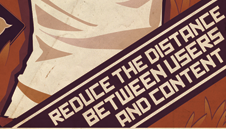What role should user experience play in your organization?
The answer to this question depends very much on who and what you are. Say you’re a bootstrapped startup founded by experts in technical issues and sales. You should try to get free advice and help, or maybe trade some equity for UX design, or perhaps even rely on your own intuition until you can raise some capital. On the other hand, a large software company such as Oracle or Microsoft should make user experience a key focus and investment for every business unit, and have a strong advocate and visionary in the C-suite. Between these extremes lie many different models for deploying user experience appropriately.
Over the next few weeks we will bring you a series of articles detailing a six-stage user experience maturity model. Beginning with the most limited level of immersion, it will provide a some simple criteria and examples of scale to help you evaluate the current role of UX in your organization while envisioning a more right-sized future. Beyond a model of scale, we’ll explore questions of resource type: when to staff up, and when to hire out.
Having worked with more than 200 clients at this point—ranging from the single-founder bootstrap to the Apples and Microsofts—we’ve seen UX operationally in just about every possible configuration. In the process we’ve learned what works, what doesn’t, and when and why different investments should be made. Over the course of this series we’ll share these learnings with you to help you invest smarter in making your experiences great.
Along with offering a blueprint for deploying UX, each recommendation will be paired with a historical overview of the user experience field. There is remarkable alignment between the way UX has evolved as a discipline and how UX should change and grow in actual deployment within companies. We will explore the following six stages:
- Intuition
- Foundations
- Organization
- Ubiquity
- Best Practice
- The Future
See you next week!
